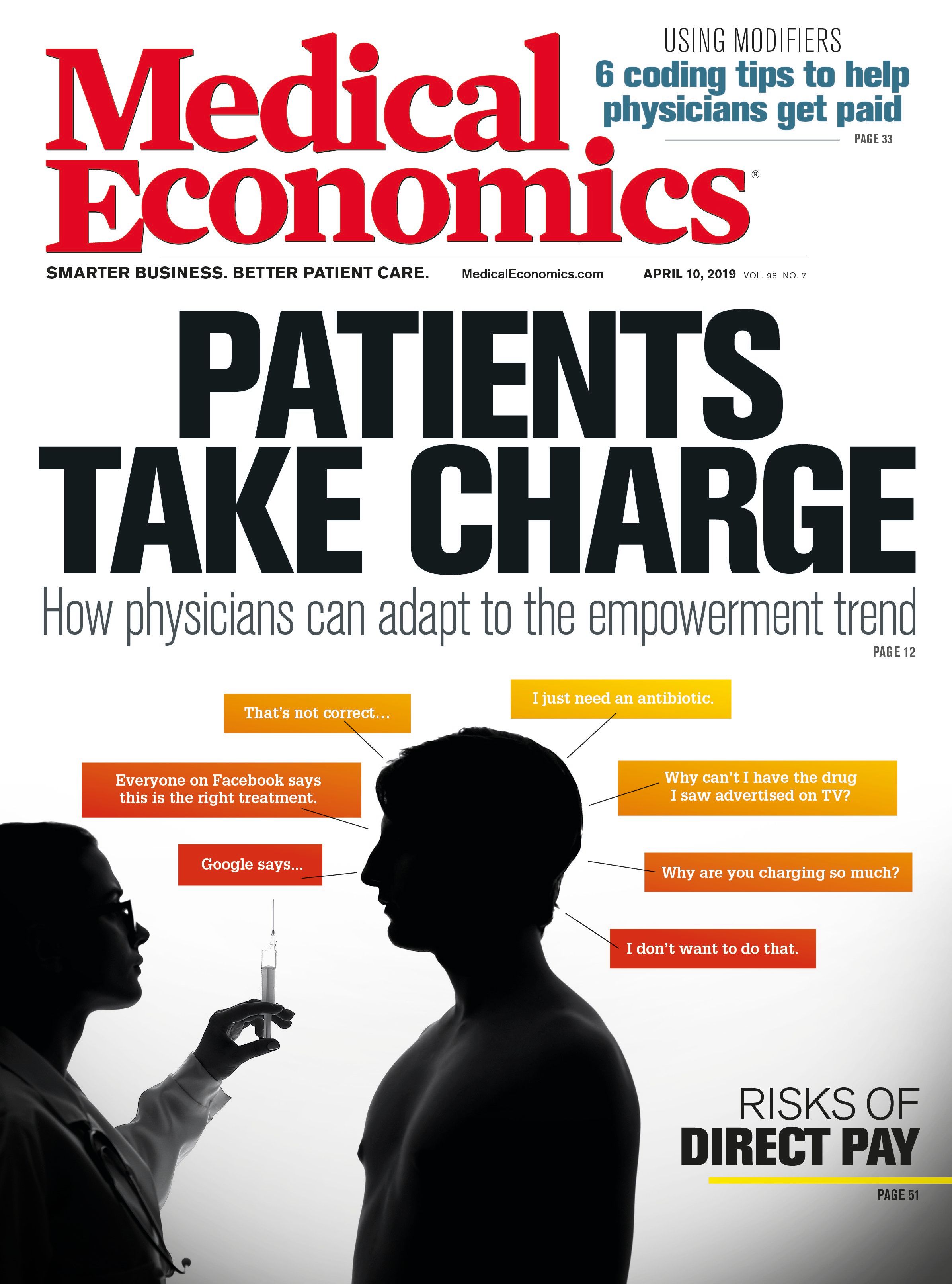Publication
Article
Medical Economics Journal
Top 4 healthcare trends for 2019
Author(s):
An overwhelming number of new medical technologies promises to improve diagnostics and increase efficiencies in healthcare-and we’ll start to see these improvements soon.
©everything possible/Shutterstock.com

An overwhelming number of new medical technologies promises to improve diagnostics and increase efficiencies in healthcare-and we’ll start to see these improvements as soon as 2019. Patients are advocating for themselves more vocally as the standard of care shifts toward a more person-centered model and the expectations of convenience and access to information is more critical than ever. Changes in medical (or insurance) coverage and legislation have pressed physicians to be more strategic about how they can provide optimal care. This is not the time for fighting change, but it is an opportunity for clinicians to implement these changes in a way that will benefit, not burden, both themselves and their patients.
The rise of the machines
Unlike science fiction, artificial intelligence (AI) technologies should give us great hope for the near future. The technology will enhance, not replace, human efforts. AI promises to alleviate repetitive burdens and provide more accurate tools, so that the medical community can offer better care. Its explosion onto the funding/startup scene is both indicative of its potential and the reason less tech-savvy people feel overwhelmed.
Growth in the AI health market is expected to reach $6.6 billion by 2021. While early adoption can be an advantage, we as clinicians must educate ourselves to truly leverage AI’s potential. On a day-to-day basis, look to AI tools for automating routine processes and providing more intuitive interfaces for your EHRs and other online tasks. At a higher level, AI algorithms can analyze that EHR data to identify risk predictors and recommend targeted treatments. Pathology results-relied upon for 70 percent of healthcare decisions-can be more precise under the guidance of AI. That same level of accuracy will be used for earlier cancer detection and more efficient pharmaceutical discoveries. For due diligence, look beyond the jargon and ask, “How will we see the benefits of this technology today?”
Marriage of convenience
Healthcare mergers and acquisitions are on the rise, with an increase of and a reported 255 mergers in Q2 of 2018. The reasons behind this trend are key to understanding whether and how it could impact your practice. According to Paul B. Ginsberg of the Brookings Institute, “It is becoming an increasingly challenging environment to be a small hospital or medical practice. The system is going through a challenging [digital] transition, which is expensive and requires specialized expertise to avoid pitfalls.”
We are also seeing small practices being acquired by larger organizations in an effort to provide the economies of scale needed to keep up with the times, and spread out the burden of supply chain, IT, and other back office functions. However, this increased efficiency comes at a price. Medical costs will rise in 2019 as these acquired organizations may adopt the fee schedule of the larger organizations, resulting in higher prices. These consolidated systems will occupy an increasingly large share of the healthcare market, giving them the power to set higher fees in the absence of competition.
All-access pass to care
Changes in healthcare legislation and patient philosophies have resulted in both a greater supply of and demand for care on a 24/7 basis.
We can see how legislation influenced access to care when the Affordable Care Act began to cover more people. The revenue generated by these additional patients enabled clinicians to serve them by extending hours, hiring more staff, opening more facilities, and adopting support technology. This increased access to care challenges the convention of office hours being for in-person appointments and after-hours being for emergencies.
The patient-first approach means that physicians must adopt new, more flexible models of care to accommodate patients. For example, seniors are demanding more in-home care and busy adults want fewer interruptions to their own work days, be it for their appointments or their children’s. Nonetheless, this trend also has resulted in higher costs, as patients turn to retail clinics and boutique providers for the convenient, accessible care they prefer. With a new reality of care delivery, how can practices satisfy their patients’ accessibility and continuity of care expectations while maintaining, or better yet, increasing, the standard of care offered by physicians?
A virtual takeover
Telehealth solutions have not been compelling enough to warrant mass adoption due to either needless complexity or the lack of value-add to patients and physicians. But the same philosophies that have governed the patient-first approach to care have now been applied to technology design, resulting in an infinite number of possibilities for connecting patients and clinicians remotely. These virtual visits (two-way video calls) best serve level 1-3 patients and those requiring refills and follow-ups, freeing up office time for patients with different/urgent needs. The rise of video calls means doctors can spend more time providing face-to-face care instead of playing phone tag. A new Medicare code for “Brief Communication Technology-Based Service” will reimburse doctors for virtual care, which opens the door for new revenue while reducing time wasted on administrative tasks. Now as accessible as any consumer app, telehealth will enable doctors to maximize their billable time and offer better continuity of care.
We’re poised for a 2019 that showcases a drive for better, more personal access to care and the embracing of technology to deliver it through consolidated databases. It’s an exciting time to be a physician-and to reconnect with our roots. Why did you become a physician? Likely so that you can help people -and a return to more personal care-leveraging technology will help you do just that.
Samant Virk, MD, is the CEO and founder of MediSprout.






